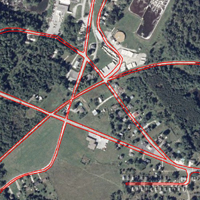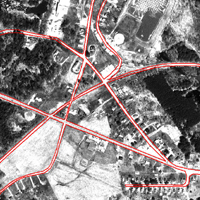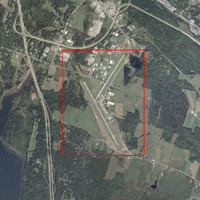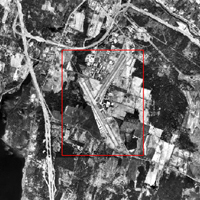 |
||||
Transportation (14)
From Anderson et al. (1976):
Major transportation routes and areas greatly influence other land uses, and many land use boundaries are outlined by them. The types and extent of transportation facilities in a locality determine the degree of access and affect both the present and potential use of the area.
Highways and railways are characterized by areas of activity connected in linear patterns. The highways include rights-of-way, areas used for interchanges, and service and terminal facilities. Rail facilities include stations, parking lots, roundhouses, repair and switching yards, and related areas, as well as overland track and spur connections of sufficient width for delineation at mapping scale.
Airports, seaports, and major lake ports are isolated areas of high utilization, usually with no well-defined intervening connections, although some ports are connected by canals. Airport facilities include the runways, intervening land, terminals, service buildings, navigation aids, fuel storage, parking lots, and a limited buffer zone. Terminal facilities generally include the associated freight and warehousing functions. Small airports (except those on rotated farmland), heliports, and land associated with seaplane bases may be identified if mapping scale permits. Port areas include the docks, shipyards, drydocks, locks, and waterway control structures.
Communications and utilities areas such as those involved in processing, treatment, and transportation of water, gas, oil, and electricity and areas used for airwave communications are also included in this category. Pumping stations, electric substations, and areas used for radio, radar, or television antennas are the major types. Small facilities, or those associated with an industrial or commercial land use, are included within the larger category with which they are associated. Long-distance gas, oil, electric, telephone, water, or other transmission facilities rarely constitute the dominant use of the lands with which they are associated.


Road Transportation (144)
Road Transportation (144)


Air Transportation (141)
Air Transportation (141)